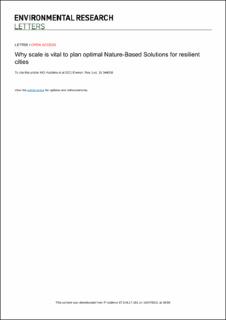| dc.contributor.author | Hutchins, Mike | |
| dc.contributor.author | Fletcher, David | |
| dc.contributor.author | Hagen-Zanker, Alex | |
| dc.contributor.author | Jia, HF | |
| dc.contributor.author | Jones, Laurence | |
| dc.contributor.author | Li, Hong | |
| dc.contributor.author | Loiselle, S | |
| dc.contributor.author | Miller, James | |
| dc.contributor.author | Reis, Stefan | |
| dc.contributor.author | Seifert-Dähnn, Isabel | |
| dc.contributor.author | Wilde, Vanessa | |
| dc.contributor.author | Xu, Chong-Yu | |
| dc.contributor.author | Yang, DW | |
| dc.contributor.author | Yu, J | |
| dc.contributor.author | Yu, S | |
| dc.date.accessioned | 2021-07-15T14:27:45Z | |
| dc.date.available | 2021-07-15T14:27:45Z | |
| dc.date.created | 2021-02-26T14:11:39Z | |
| dc.date.issued | 2021 | |
| dc.identifier.citation | Environment Research Letters. 2021, 16, 044008. | en_US |
| dc.identifier.issn | 1748-9326 | |
| dc.identifier.uri | https://hdl.handle.net/11250/2764573 | |
| dc.description.abstract | A need for multi-functional assessment tools evaluating trade-offs and co-benefits for various types of Nature-Based Solutions (NBS) has been increasingly identified in recent years. Methodologically, concepts for a tool are presented which include quantifying the demand and potential for NBS to enhance ecosystem service (ES) provision, and linking ESs to readily quantifiable and legislatively-relevant environmental quality indicators (EQIs). The objective of tool application is to identify optimal NBS placement across a diverse set of socio-environmental indicators, whilst also incorporating issues of relative location of areas of implementation and benefit accrual. Embedded within the tool is the importance of evaluating outcomes in terms of economic benefits and of sustainable development goals. The concepts are illustrated with simplified examples, relating to the case of implementing urban forestry as an exemplar NBS. By summarising the knowledge base it is demonstrated that benefits of NBS are substantially scale-dependent in two main respects; those of extent and proximity to receptors. Evaluation tools should be capable of quantifying scale-dependence. The substantive importance of these considerations and how their dynamics vary between indicators and services is illustrated graphically through schematic functions. When developed, the tool should be used as a focus for consultation and co-design to pinpoint the size of NBS necessary to achieve a sufficient level of benefit for a particular receptor. This could be measured against target levels of benefit for each indicator, distinguishing between primary intended outcomes and those co-benefits or trade-offs that are secondary or unintended. | en_US |
| dc.language.iso | eng | en_US |
| dc.publisher | IOP Publishing | en_US |
| dc.rights | Navngivelse 4.0 Internasjonal | * |
| dc.rights.uri | http://creativecommons.org/licenses/by/4.0/deed.no | * |
| dc.title | Why scale is vital to plan optimal Nature-Based Solutions for resilient cities | en_US |
| dc.type | Peer reviewed | en_US |
| dc.type | Journal article | en_US |
| dc.description.version | publishedVersion | en_US |
| dc.rights.holder | © 2021 The Author(s). | en_US |
| dc.source.volume | 16 | en_US |
| dc.source.journal | Environmental Research Letters | en_US |
| dc.source.issue | 4 | en_US |
| dc.identifier.doi | 10.1088/1748-9326/abd9f4 | |
| dc.identifier.cristin | 1894072 | |
| dc.relation.project | Norges forskningsråd: 299937 | en_US |
| dc.source.articlenumber | 044008 | en_US |
| cristin.ispublished | true | |
| cristin.fulltext | original | |
| cristin.qualitycode | 2 | |

